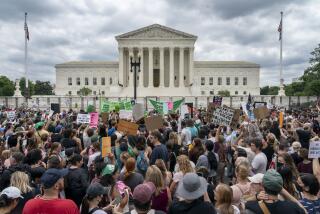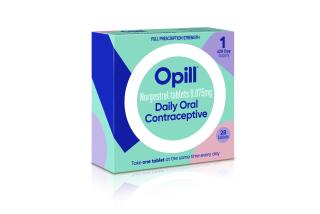Teen-Agers and Birth Control
- Share via
One out of five American babies is born to an unwed mother, according to federal health statistics, and that new mother is often a teen-ager. More than 1 million American teen-agers got pregnant last year, most of them by mistake.
The United States has the highest adolescent pregnancy rate of five similarly developed nations, according to the research division of Planned Parenthood. The causes are complex. The solutions are numerous, controversial and in some cases as unreliable as some methods of birth control.
This public health emergency needs urgent attention. The Reagan Administration would prefer to leave these matters to parents, an ideal solution for ideal families. Congress has provided funding for family planning, but it is inadequate.
Private foundations, organizations and individuals should also respond. On that score, five foundations have funded a clinic that provides general medical attention, including birth control methods, at DuSable High School in Chicago.
Making such information easily available for teen-agers with the hope that they will practice what they learn is one practical approach to the problem. However, there are fewer than 30 clinics dispensing birth control methods in U.S. high schools and none in Los Angeles.
The Chicago clinic opened in June, so it is too early to determine if the accessibility will reduce the high rate of teen-age pregnancy at the high school--about 200 of the 900 female students have babies annually. The Chicago parents, for the most part, welcome the clinic, which is run by a local hospital, but critics who equate birth control with abortion want it closed.
The objectors should approve of approaches that reduce the need for abortion, which they find most abhorrent. They should also sanction the private support that does not involve their tax dollars. More effective solutions would convince teen-agers, young men and young women, that they are independent, have choices and can control their futures.
Teen-age pregnancies cripple futures. Few young mothers develop into independent, productive women. In California, 80% drop out of school. Their children often grow up poor, supported by taxpayers. More than half of the state’s welfare budget is spent on mothers who first gave birth as teen-agers, according to the University of California at San Francisco.
This epidemic is burdening families, communities and taxpayers. The extent of the crisis demands public and private attention. The coalition that funded the Chicago clinic includes the Robert Wood Johnson Foundation of Princeton, N.J.; the Community Wealth Fund of New York and the Joyce Foundation, the Pittway Corp. and the Charitable Foundation of Chicago. Their efforts inspire hope.
A clinic at a high school is not the only solution to the tragedy of teen-age pregnancies. But it is an approach worth duplicating in an atmosphere without hysteria.
More to Read
Sign up for Essential California
The most important California stories and recommendations in your inbox every morning.
You may occasionally receive promotional content from the Los Angeles Times.










